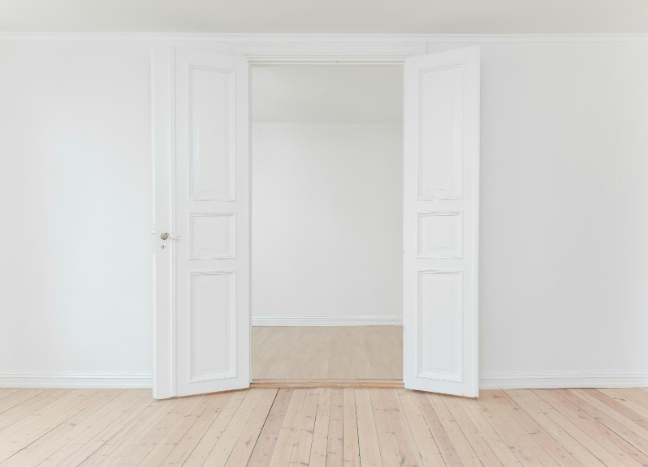Crafting is not just a hobby; it’s a way to express creativity and bring joy to everyday life. Building an addition to your home that is dedicated to crafting can ensure that you have a dedicated space to immerse yourself in your projects. Assessing space, designing for creativity, choosing the right materials, organizing supplies, and ensuring good lighting are essential considerations in creating the perfect crafting room. Below, we explore each of these aspects in detail, offering you valuable insights into crafting the perfect creative space.
Choosing Materials and Tools for Crafting Room Construction
When constructing your crafting room, selecting the right materials is crucial for both functionality and ambiance. Durable flooring, like laminate or hardwood, can withstand the wear and tear of heavy use and provide ease of cleaning. Wall surfaces should be considered as well; paint with a satin or semi-gloss finish can handle the occasional splatter and is easier to wipe down than a flat finish.
The construction phase is an excellent time to think about in-built elements such as shelving, cabinets, or counters. Custom solutions might be more costly upfront, but they can maximize space and keep your crafting materials well-organized. Remember, if you’re unsure about undertaking the work yourself, professional services like B&E Services in Hagerstown MD, offer expertise in HVAC systems, assuring that your crafting space is comfortable throughout the year.
Another point to consider is energy efficiency. Insulation, energy-saving windows, and LED lighting not only lower your utility bills but also signify a commitment to sustainability. These aspects will keep your crafting room comfortable and eco-friendly for the long term.
Storage Solutions and Organizational Hacks for Craft Supplies
Every crafter knows that an abundance of supplies can become chaotic without proper organization. Implementing smart storage solutions can dramatically increase productivity and facilitate the creative process. Open shelving, clear storage bins, and label systems are standard methods that allow for easy visualization and retrieval of craft supplies.
Wall-mounted systems, such as pegboards or magnetic boards, utilize vertical space to store tools and materials off the counter, keeping the workspace clear. Drawers with dividers can organize smaller items, preventing them from becoming jumbled and hard to find. Remember, flexibility in storage allows you to adjust as your collection of materials expands or changes.
If you’re seeking inspiration for clever storage solutions, online retailers like CraftDirect offer a plethora of organizational products specifically designed for craft enthusiasts. With the right storage hacks, you can transform your crafting room into a haven of order and inspiration.
Designing Your Crafting Room for Maximum Creativity and Efficiency
Designing your crafting room involves more than just aesthetics. It’s about creating a space that inspires and facilitates productivity. Select a design theme that ignites your creative spark, whether it’s vibrant and eclectic or calm and serene. Create distinct areas within the room for different activities, such as a sewing corner, a scrapbooking desk, or a painting easel to keep projects organized.
Efficiency is key to maintaining a smooth workflow. Place tools and materials within easy reach, and design the layout so you can move effortlessly between tasks. An island in the center of the room can serve as a multifunctional workspace for cutting, assembling, or packing. It’s also important to incorporate ample surface space for spreading out materials and seeing projects in progress.
Personal touches can go a long way in making the space truly yours. Display previous projects, inspirational quotes, or anything else that reinforces your creative vision. These personalizations make the room not just a place to work, but a sanctuary for imagination.
Incorporating Natural Light and Task Lighting in Your Crafting Space
Good lighting is a cornerstone of any effective crafting room. Natural light not only boosts your mood and energy levels but also helps in accurately matching colors and fine-tuning details. Aim to position your crafting table or workspace near windows to make the most of daylight, and consider light-filtering blinds or shades to control glare.
For crafters seeking more reliable daylight throughout the day, a roof lantern can be an excellent solution: these glazed roof structures deliver even, shadow‑free light that improves colour accuracy and reduces eye strain. Well-designed roof lanterns also contribute thermal insulation and noise reduction, helping keep the room comfortable in all seasons without creating hotspots. Many modern options are modular and quick to install, and can include opening vents for airflow when needed. Working with experienced Roof Lantern installers ensures the lantern is sized and positioned to maximise usable light while fitting the room’s layout.
When daylight fades, having the right task lighting becomes critical. Light fixtures with adjustable arms and brightness settings allow you to customize the light according to the task at hand. LED lamps that mimic natural light offer the color accuracy needed for crafts like quilting or needlework without the heat or energy consumption of traditional bulbs.
Overall, a well-planned crafting room addition can be a sanctuary for creativity and an investment in your craft. From the strategic use of space to the practicalities of storage and lighting, each design detail plays a role in fashioning an environment that enhances and refreshes your artistic flow. With these tips and resources, you can embark on the journey of creating the ultimate crafting room tailored to your unique needs and passions.










